Cashew Nut Cultivation and Planting: How to Plant a Cashew Tree
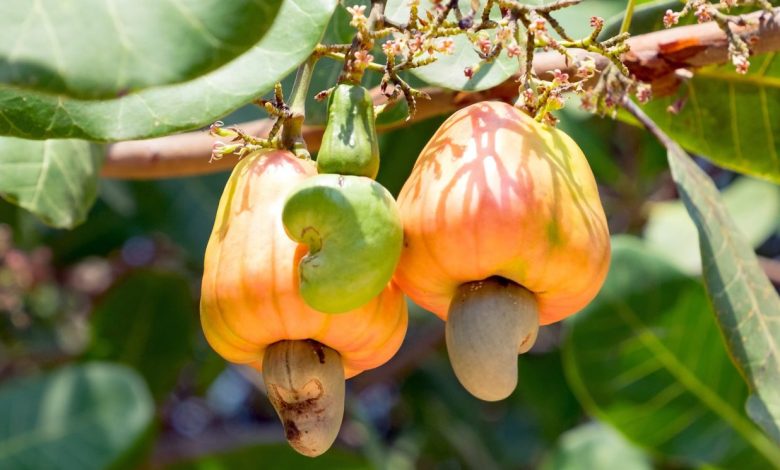
cashew(Anacardium occidentale) is a tree native to the northeast region of Brazil, its size ranges from 1.5 to 15 meters in height in its natural habitat, with a diameter of up to 40 cm.
It has a wide, dense and irregularly shaped crown. Although it may not seem like it, it is from the mango family.
To me personally the cashew nut isone of my favorite nuts.Its versatility means that it is included in numerous dishes (salads) or as an aperitif.
Although they are a bit expensive… What better thanplant your own cashew treeand then cook them for you or your family?
Important Points when Planting Cashews:
- When? In the months of May and June, preferably.

- Where? It needs a lot of sunlight (at least 6 hours a day). It is favored by rather warm climates and can grow at high altitudes. Sandy soils favor it.
- How long does it take to grow? 3 to 5 years. It is a fast growing tree.
- How do we prepare the land? The pH of 6.5 to 7. We include a good handful of organic matter and compost. The soil must be loose.
- Is it necessary to fertilize? He annually fertilizes the land with nitrogen ( legumes), zinc and phosphorus.
- When will it bear the first fruits? Probably after 3 years, if the land has been fertilized and given enough water.
- How do we water? Ideal, drip irrigation. It needs a lot of water. Although without flooding. It is a tropical type plant.
- How do we sow? Here step by step.
- Plagues and diseases? Birds, thrips, phytophagous bugs, anthracnose, mildew, gummosis, dark mold, angular spot and spot produced by algae.
When do we plant cashews?
 Planting should preferably be done at the beginning of the rainy season.
Planting should preferably be done at the beginning of the rainy season.
In the northern hemisphere betweenthe months of May or June.If carried out in later months, the seasonal rainfall regime of each area must be considered, ensuring at least 800 millimeters of precipitation.
In case of planting in months close to the dry season , an irrigation system must be available to avoid stress and loss of plants.
Where to do it?
Cashew farming thrives in low placesclose to the coast,in hot rather dry climates, and grows bestat altitudes ranging from 0 to 1,500 metersabove sea level.
The places where the speed of the winds exceeds 10 km per hour and is permanent can cause the fall of leaves, flowers and fruits, which affects their development and production. If you live in an area like this you can plant it behind a wall to protect it a bit.
cashewrequires good lightingevenly distributed over your glass throughout the day.
 The lack of light affects flower formation and fruit development. This means that it must grow freely and without light competition. Cashew grows optimally withaverage temperatures between 21 and 28 °C.
The lack of light affects flower formation and fruit development. This means that it must grow freely and without light competition. Cashew grows optimally withaverage temperatures between 21 and 28 °C.
It easily thrives in sandy coastal soils, saline and even rocky soils. It requires soils with depths greater than 4 meters, which ensures root growth (which can be up to 10 m) and the adequate development of the plant.
It is recommended to evaluate the profile of the site where the plantation is to be established, locating streams, rivers, landslides, artisanal wells and slopes to define its planting.
The Optimum Range of Soil pHit is from 6.5 to 7.0.
In soils with lower pH, the availability and absorption of plant nutrients is limited, this can be corrected by adding agricultural lime to the soil. Planting on red-yellow podsol and latosol soils and quartz sands is not recommended.
How to prepare the land for planting cashews?
The plant does not require special land or conditions for planting.
Flat and semi-flat soils are prepared simply by loosening the soil.
While for undulating soils and slopes it is recommended that you make a large deep hole that offers better conditions for root development. You can improve soils by adding organic matter or compost.
How do we irrigate cashew crops?
 The Cashew is a hardy tree;however, it needs at least one moderate rainy season. Deep soils with good moisture retention and adequate rainfall allow the cashew tree to withstand prolonged periods of drought.
The Cashew is a hardy tree;however, it needs at least one moderate rainy season. Deep soils with good moisture retention and adequate rainfall allow the cashew tree to withstand prolonged periods of drought.
Among the irrigation systems,the most convenient is localized irrigation (drip irrigation)o The recommended emitters are micro-sprinklers, mainly in sandy soils.
After the rainy season it is recommended that you water the tree when it is in its flowering period. Rainfall in the production phase inhibits the flowering process.
The easy planting of cashew nuts
The seeds can be sown directly in the field at a depth of 1 cm and separated from each other by at least 10 meters since when they grow they will compete for nutrients.
The selection of the plant in the nursery is better, since the characteristics of the plant are selected.
Subsequently, prune the tree at least once a year and provide organic matter if it is growing in sandy or rocky soil.
What favorable associations does it have?
 In its natural areas of distribution it is a plant belonging to the primary vegetation, being dominant in the savannah-type vegetation of Brazil. In areas where this species has become naturalized, it can act as an invader.
In its natural areas of distribution it is a plant belonging to the primary vegetation, being dominant in the savannah-type vegetation of Brazil. In areas where this species has become naturalized, it can act as an invader.
It has many benefits for the environment, as well as a restorative effect, in the control of erosion and the recovery of degraded land.
Its special characteristic is that it is a species used for soil regeneration. This plant has been used to rehabilitate sites where there was mining exploitation. It is also usedas a windbreakfor its ability to withstand the winds.
What pests and diseases does it have?
In the cultivation of cashews, pests differ depending on the plantation regions, and it has to do withtemperature, precipitation, humidityrelative and the ground.
Different diseases produced by different fungi are identified as etiology; these diseases are anthracnose, mildew, gummosis, dark mold, angular spot, and spot produced by algae.
Phytophagous bugs are the most prevalent in cashew plantations, becoming the main economic pest.
Thrips are another economically important pest. They are found on the plant throughout the year.
The termite is a pest that is not considered important at the time of its appearance, which means that in an average time of 5 years there is an invasion of 40% of the plantation. Termite colonies are located both on the ground and in the crown and branches of the tree.
Benefits of cashew nuts
Cashew leaves are simple and alternate, dull bluish – green, while the trunk is thick and contorted.
The trunk branches almost from the base with abundant, highly twisted branches with smooth, brown or gray, fissured outer bark. The inner bark is whitish to brown, thick, bitter and astringent as well as containing a milky sap.
The flowers are small and quite aromatic, greenish or gray with a little pinkish to reddish tint, which both the male and female flowers have.
It has a false fruit that is yellow to bright red in color and that at its end supports the fruit that is grayish green and 2.5 to 3 cm long. Inside it has kidney-shaped seeds, which contain an almond.
Its natural geographic distribution is in tropical areas with an altitude of 500 to 1,500 meters. It is native to tropical Brazil, but is spread throughout the tropics around the world.
Cashews, like the vast majority of nuts, haveHuge nutritional benefits.
- Prevents heart problems.
- Prevents blood problems.
- It can be good for the skin.
- It is a resource rich in fiber (so it prevents type 2 diabetes).
- They are one of the richest nuts in protein.
- They are highly rich in antioxidants.
How long does cashew live?
You can live up to 30 years, if you have the proper care for your good health.
How long does it take to grow cashew?
It grows rapidly when it is in a favorable climate, reaching its full height between 3 and 5 years after sowing.
How long does it take to produce fruit?
It takes approximately 3 years to bear the first fruit of its life and can continue to bear fruit for another 27 years without problems.
Can it be grown in a pot?
Yes, it can be grown in a pot, as long as it is a large pot that gives the plant space to grow properly.
How many times does the cashew tree produce fruit?
Its production is once a year, following the life cycle of the plant. In addition, the amount of production will increase over the years.
Should the cashew tree be pollinated to obtain fruit?
It does not require pollination of any kind, since its flowers are hermaphroditic.
How cold can cashew tolerate?
It is a tropical climate tree, so it does not tolerate cold very well, being able to withstand short periods of time at 0ºC.
A lower temperature would cause serious damage to the specimen, and could lead to death.
How many cashew trees can be planted per hectare?
Between 125 and 270 cashew trees can be planted per hectare, giving them a good amount of space to grow.
Despite this, it is possible to plant up to 400 specimens in one hectare if they are planted much closer together.
What kind of fertilizer does cashew nut need?
It needs mineral rich fertilizers for its development once a year.
Nitrogen, zinc and phosphorus that are integrated with the substrate and improve the conditions of the tree.
How much heat and/or drought can cashew tolerate?
Heat is very well tolerated by this species, reaching about 40ºC without problems and even being able to withstand higher temperatures.
While it does not tolerate drought, the tree does need enough water in order to stay healthy.
You may also be interested
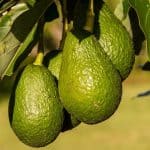
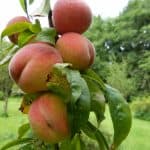
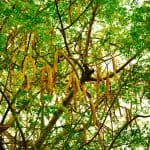




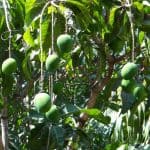
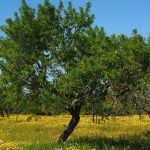
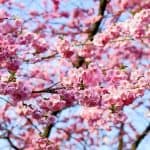
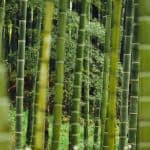
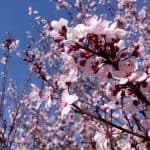

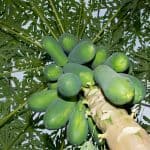
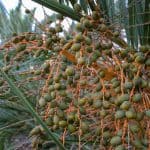
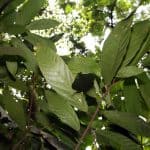
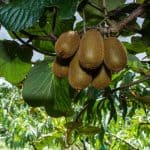
![Photo of Transplant Geraniums: [Conditions, Tools and Steps to follow]](https://www.complete-gardening.com/wp-content/uploads/2022/08/transplant-geraniums-conditions-tools-and-steps-to-follow-390x220.jpg)
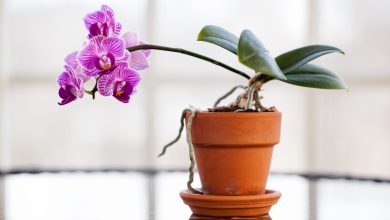

![Photo of Plant Araucaria: [Care, Irrigation, Cultivation, Substrate]](https://www.complete-gardening.com/wp-content/uploads/2022/08/plant-araucaria-care-irrigation-cultivation-substrate-390x220.jpg)